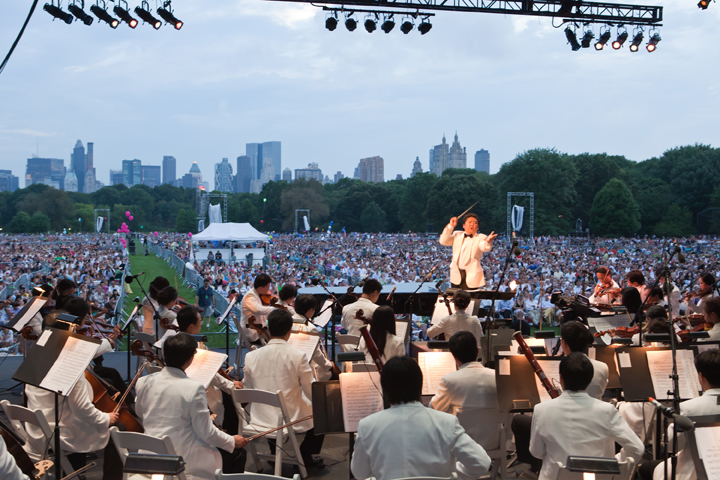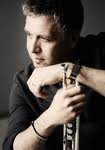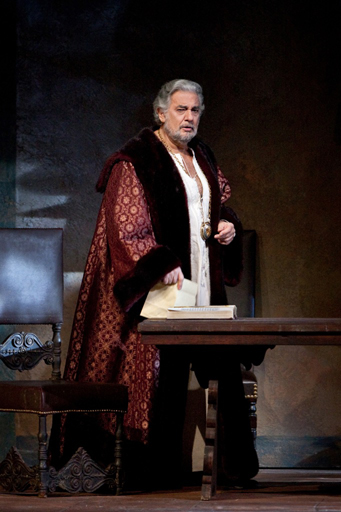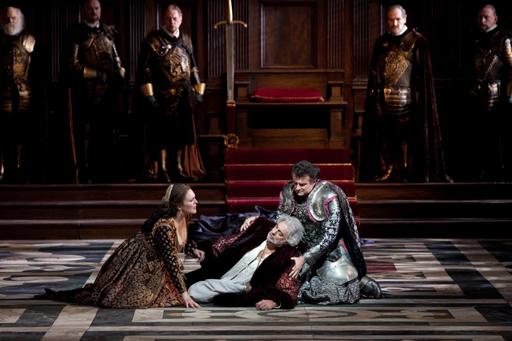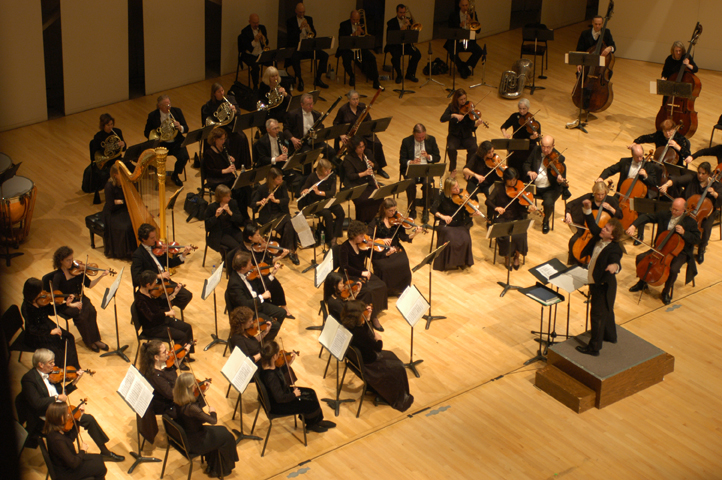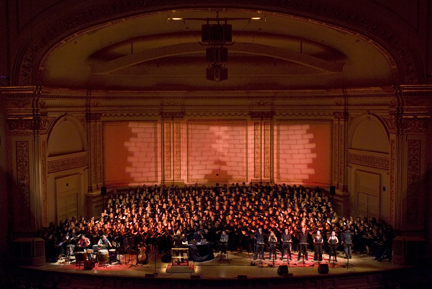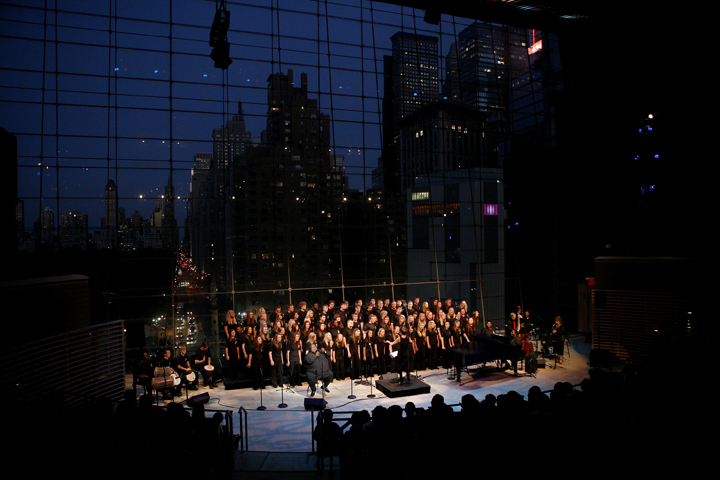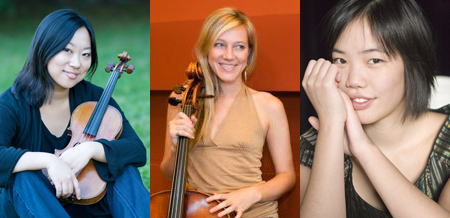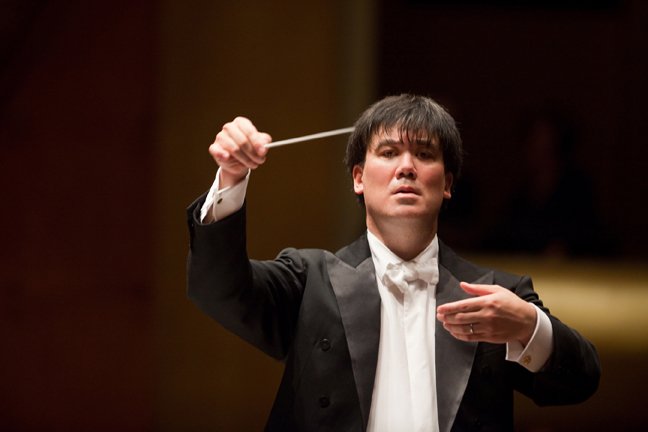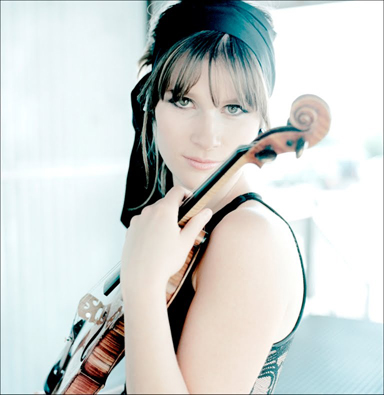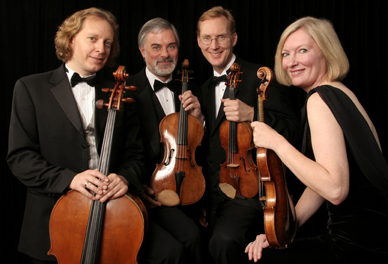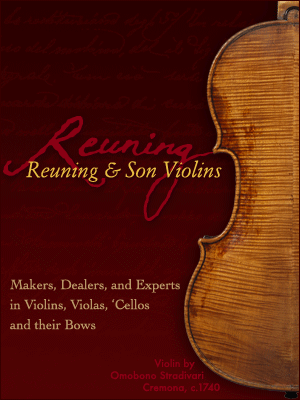In an outdoor concert threatened by rain, a New York Philharmonic Parks Concert featuring The Shanghai Symphony Orchestra went on as scheduled and drew thousands of New Yorkers. This important occasion marks the first time that another orchestra has shared a concert with the Philharmonic in Central Park. The Shanghai Symphony Orchestra, in an appearance that is helping to promote the World Expo in Shanghai, played the first half—(a reverse of the original plan because of the bad weather)—and played very well indeed. Certainly, the amplification has the ability to hide tonal deficiencies, but microphones cannot hide wrong notes, and there were hardly any blemishes to be found. In addition, the musicians played with immense energy under passionate conductor Long Yu.
Guang Zhao’s composition, “Ode to the Expo”, is a lovely, lush, Neo-Romantic work that served as a crowd-pleaser. The baritone Changyong Liao, singing Rossini’s “Largo al factotum della citta” from “The Barber of Seville”, was absolutely marvelous, and soprano Ying Huang was very appealing in “La ci darem la mano” from “Don Giovanni”. The Chinese piano soloist, Lang Lang–now a household name–transformed Gershwin’s famous “Rhapsody in Blue” into something rather foreign; I could hardly recognize the piece due to extreme exaggerations of tempo and dynamics. All in all, however, this New York Philharmonic venture—adding another orchestra to a concert—is a great idea and should be continued as much as possible. The large audience sprawled across the Great Lawn seemed excited; they even voted (via texting) for Lang Lang to play a Chinese piece as an encore.
The second half brought the New York Philharmonic to the stage, and one could instantly recognize the difference in the wind and brass brilliance and solidity of sound. There was more strength and tonal refinement in the strings as well. The guest conductor, Andrey Boreyko, conducted Tchaikovsky’s “Eugene Onegin” Polonaise with vigor, and the orchestra played with authority and finesse. Bernstein’s “West Side Story Dances” was another matter, however; because the Philharmonic knew the piece so much better than Maestro Boreyko (he seemed like he had never conducted it), he often stayed out of the way. That is good stylistically (the feel of the work came across authentically), but bad for ensemble because the orchestra needed technical clarity from Boreyko’s beat in tricky spots and didn’t get it. As a result, the orchestra was sometimes imprecise. Ravel’s “Bolero” suffered from early amplification issues such as microphone interference with squeaky high frequencies and warped dynamics. Eventually the problems subsided, but the orchestra lost its focus and went on automatic pilot—despite some fantastic solo playing. Because there were two orchestras and several soloists, there were many logistical issues to deal with. Ultimately, the Philharmonic and another guest orchestra could learn to maneuver through the obstacles. This type of concert is expensive and difficult, but a very worthwhile endeavor because—as many of us know—it has the power to bring people together.

